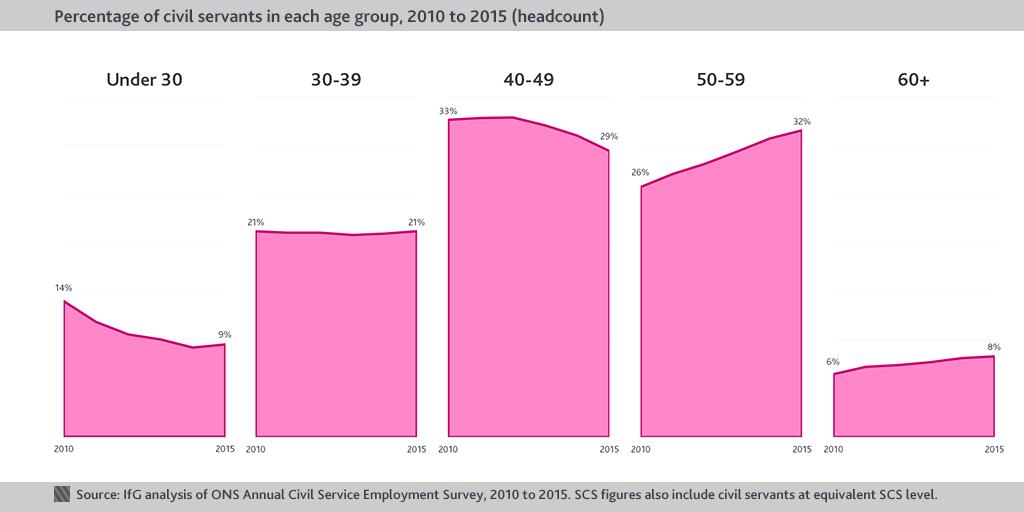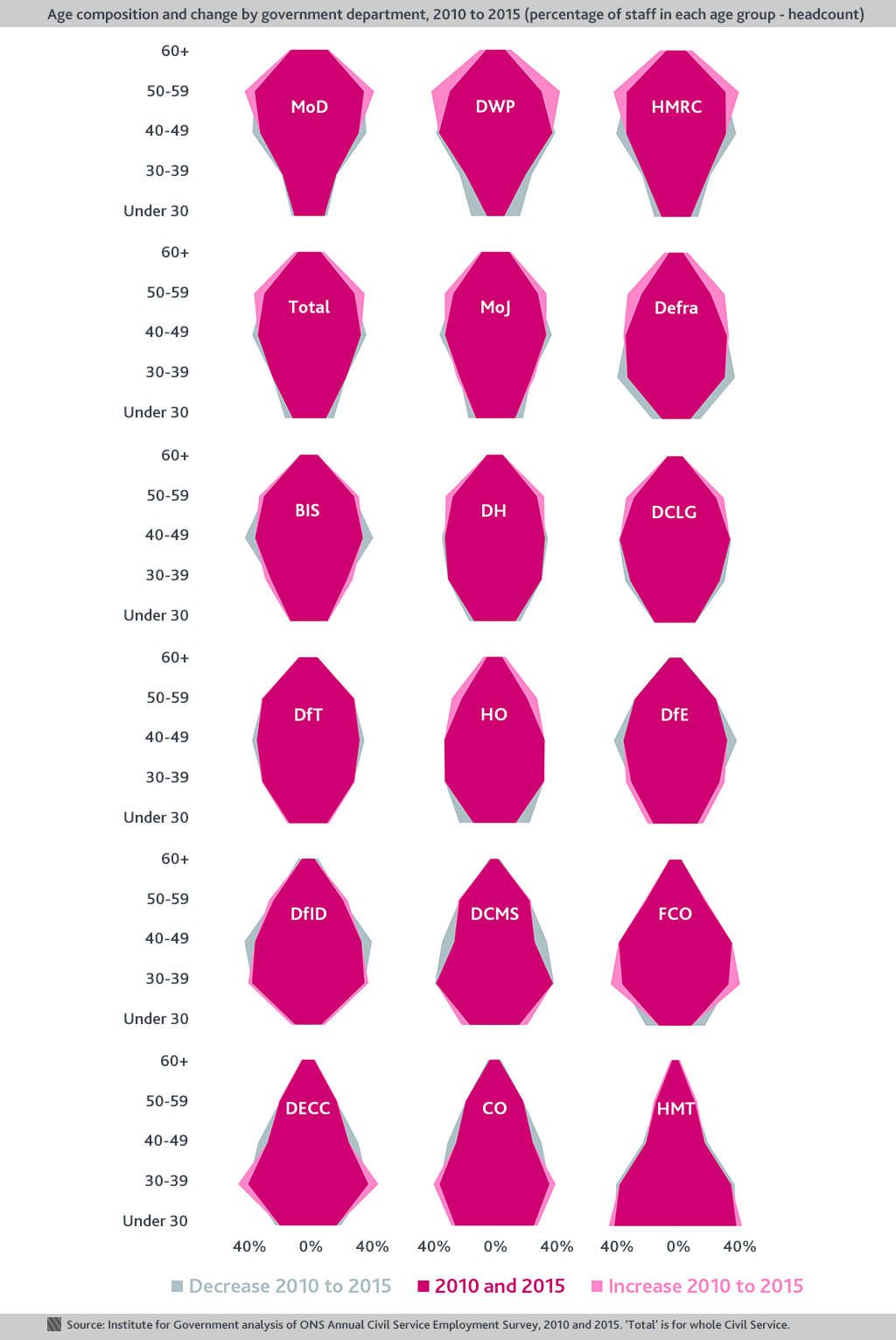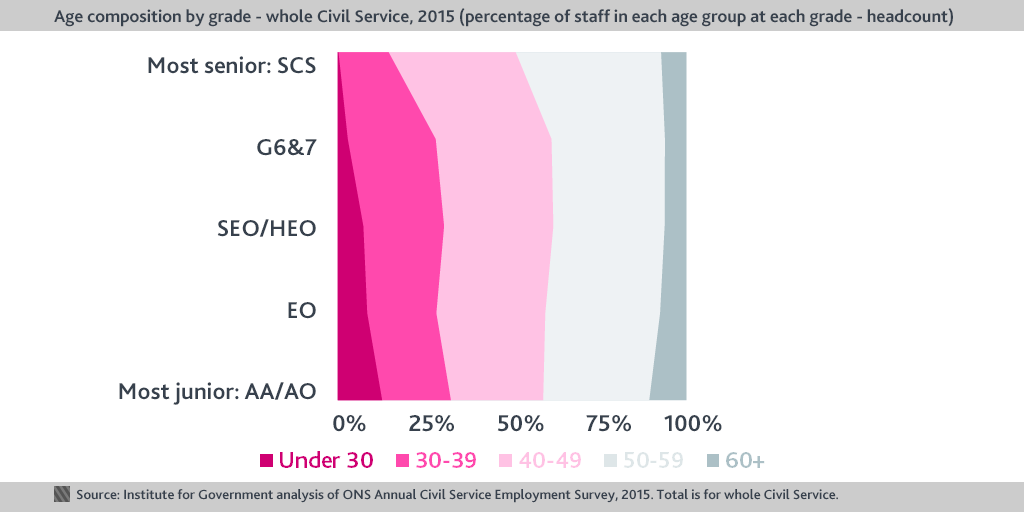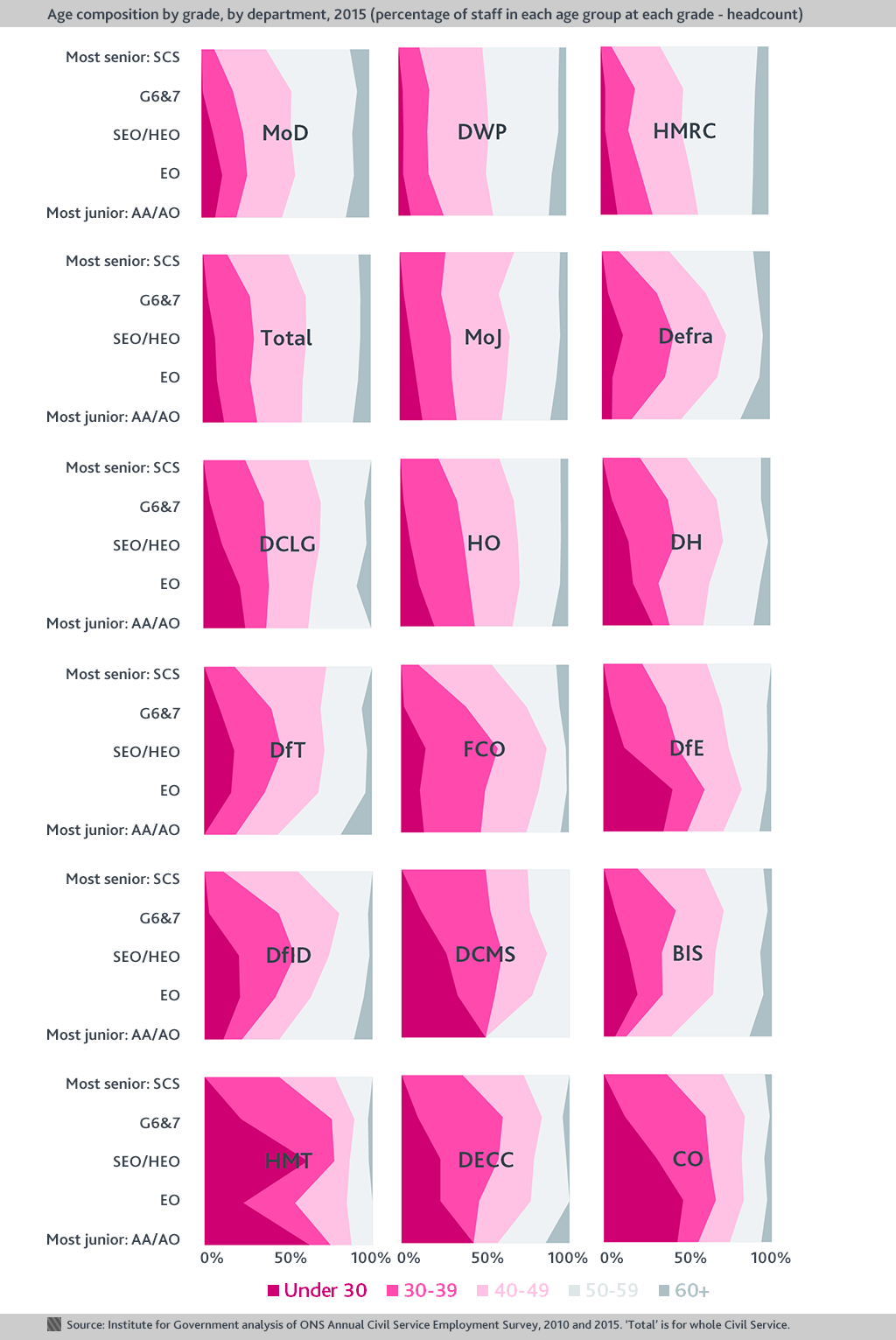How old is the Civil Service?
The Civil Service – like the country – is getting older
Over the last five years, recruitment freezes have limited the flow of new blood into Whitehall, and the Civil Service – like the country – is getting older. Continuing our examination of the latest Annual Civil Service Employment Survey, Ollie Hirst and Gavin Freeguard take a look at the changing age profile of government and its departments.
The Civil Service is getting older; just 9% of civil servants are under 30, down from 14% in 2010. 



Abbreviations for government departments can be found here.
- Topic
- Civil service
- Keywords
- Civil servants
- Publisher
- Institute for Government